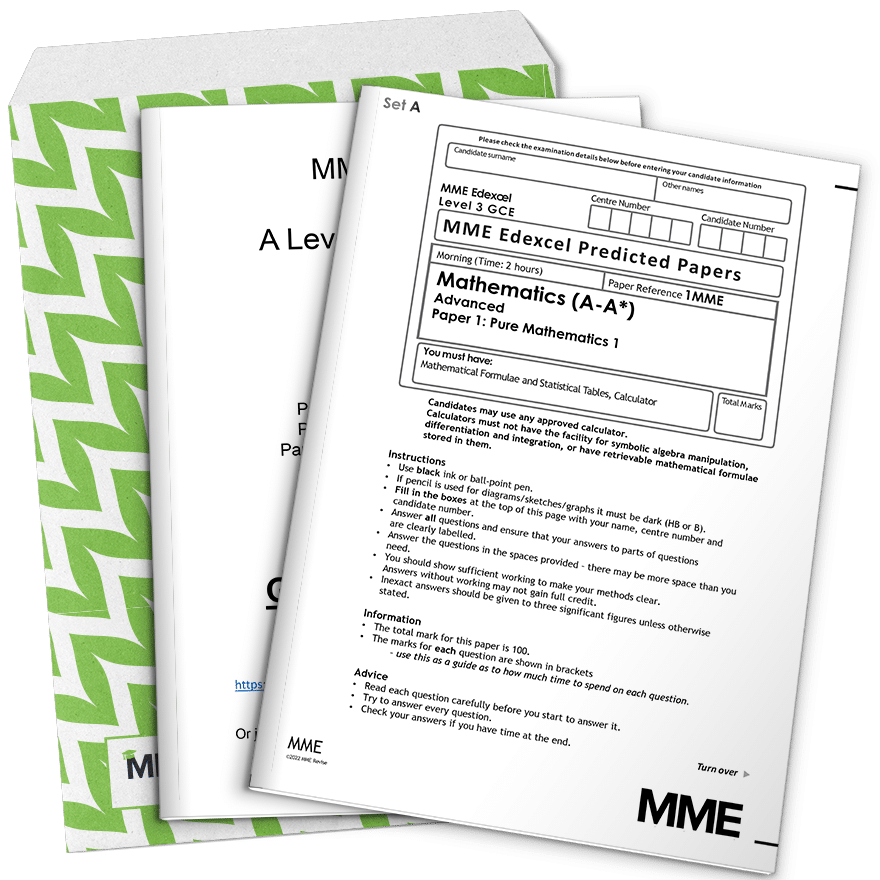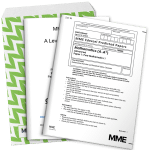The Standard Normal Distribution
The Standard Normal Distribution Revision
The Standard Normal Distribution
The standard normal distribution is Z\sim N(0,1), i.e. it is a normal distribution with mean 0 and standard deviation 1. It is always written with the letter Z rather than X.
Given a normal distribution X\sim N(\mu, \sigma^{2}), we can convert to the standard normal distribution with the formula:
\dfrac{X-\mu}{\sigma}=Z
The cumulative distribution function of Z is given its own symbol \Phi.
\Phi(x)=\mathbb{P}(Z\leq x)
Make sure you are happy with the following topics before continuing.
Why Use the Standard Normal Distribution
One reason to use the standard normal distribution is to solve probability questions that could otherwise be difficult for a calculator to handle.
Example: X\sim N(1000000,122500). What is \mathbb{P}(999500\leq X\leq 1001000)?
\begin{aligned}&\mathbb{P}(999500\leq X\leq 1001000)=\\[1.2em]&\mathbb{P}\left(\dfrac{999500-\mu}{\sigma}\leq Z\leq \dfrac{1001000-\mu}{\sigma}\right)=\\[1.2em]&\mathbb{P}\left(\dfrac{999500-1000000}{\sqrt{122500}}\leq Z\leq \dfrac{1001000-1000000}{\sqrt{122500}}\right)\\[1.2em]&=\mathbb{P}\left(\dfrac{-10}{7}\leq Z\leq \dfrac{20}{7}\right)\\[1.2em]&=0.9213\end{aligned}
Another reason to use the standard normal distribution is that you will be provided with a table of key values for it – called a percentage points table.
The percentage points table is most useful for finding Z values from probabilities.
Example: X\sim N(10,9) and \mathbb{P}(X<x)=0.95
Find x.
\mathbb{P}(X<x)=0.95
\mathbb{P}\left(Z<\dfrac{x-\mu}{\sigma}\right)=0.95
\mathbb{P}\left(Z<\dfrac{x-10}{3}\right)=0.95
From the percentage points table we find:
\dfrac{x-10}{3}=1.6449
x-10=4.9347
x=14.9347
Transform to Standard Normal to Find an Unknown
The biggest reason to use the standard normal distribution is that doing so can help us find \mu and \sigma if one of them is unknown.
Example: Suppose X\sim N(\mu,4) and \mathbb{P}(X\leq 31)=0.9. Find \mu.
\mathbb{P}(X\leq 31)=0.9
\mathbb{P}\left(Z\leq \dfrac{31-\mu}{2}\right)=0.9
From the percentage points table:
\dfrac{31-\mu}{2}=1.2816
31-\mu=2.5632
\mu=31-2.5632
\mu=28.4368
If \sigma is unknown instead of \mu we can use the same method to get an equation for it.
Simultaneous Equations from Standard Normal
If we are given two probabilities, we can convert to the standard normal distribution and use the percentage points table to get two equations, so can solve for two unknowns. This means that we can find both \mu and \sigma.
Example: Suppose X\sim N(\mu,\sigma^{2}) and \mathbb{P}(X<0.2)=0.05,\mathbb{P}(X<0.9)=0.8. Find \mu and \sigma.
\mathbb{P}(X<0.2)=0.05
\mathbb{P}\left(Z<\dfrac{0.2-\mu}{\sigma}\right)=0.05
Use percentage points table:
\dfrac{0.2-\mu}{\sigma}=-1.6449
0.2-\mu=-1.6449\sigma\;\;\;(1)
\mathbb{P}(X<0.9)=0.8
\mathbb{P}\left(Z<\dfrac{0.9-\mu}{\sigma}\right)=0.8
Use percentage points table:
\dfrac{0.9-\mu}{\sigma}=0.8416
0.9-\mu=0.8416\sigma\;\;\;(2)
0.7=2.4865\sigma\;\;\;(2)-(1)
\sigma=0.2815
0.9-\mu=0.8416\times 0.2815
0.9-\mu=0.2369
\mu=0.6631
The Standard Normal Distribution Example Questions
Question 1: Find \mathbb{P}(10\leq X\leq 15) where X\sim N(12,25) by converting to the standard normal distribution.
[3 marks]
\mathbb{P}(10\leq X\leq 15)=
\mathbb{P}\left(\dfrac{10-12}{5}\leq Z\leq \dfrac{15-12}{5}\right)=
\mathbb{P}(-0.4\leq Z\leq 0.6)=
0.3812
Question 2: Find z such that:
i) \mathbb{P}(Z<z)=0.1
ii) \mathbb{P}(Z>z)=0.6
iii) \mathbb{P}(Z<z)=0.9995
[3 marks]
Question 3: Suppose X\sim N(8,\sigma^{2}) and \mathbb{P}(X<7)=0.4. Find \sigma
[4 marks]
\mathbb{P}(X<7)=0.4
\mathbb{P}\left(Z<\dfrac{7-8}{\sigma}\right)=0.4
From percentage points table:
\dfrac{7-8}{\sigma}=-0.2533
\dfrac{-1}{\sigma}=-0.2533
-1=-0.2533\sigma
\sigma=\dfrac{1}{0.2533}
\sigma=3.9479
Question 4: Consider a distribution X\sim N(\mu,\sigma^{2}) such that:
\mathbb{P}(X<100)=0.01
\mathbb{P}(X<200)=0.975
Find \mu and \sigma.
[6 marks]
\mathbb{P}(X<100)=0.01
\mathbb{P}\left(Z<\dfrac{100-\mu}{\sigma}\right)=0.01
From percentage points table:
\dfrac{100-\mu}{\sigma}=-2.3263
100-\mu=-2.3263\sigma\;\;\;(1)
\mathbb{P}(X<200)=0.975
\mathbb{P}\left(Z<\dfrac{200-\mu}{\sigma}\right)=0.975
From percentage points table:
\dfrac{200-\mu}{\sigma}=1.96
200-\mu=1.96\sigma\;\;\;(2)
100=4.2863\sigma\;\;\;(2)-(1)
\sigma=\dfrac{100}{4.2863}
\sigma=23.3301
200-\mu=1.96\times 23.3301
200-\mu=45.727
\mu=154.273










